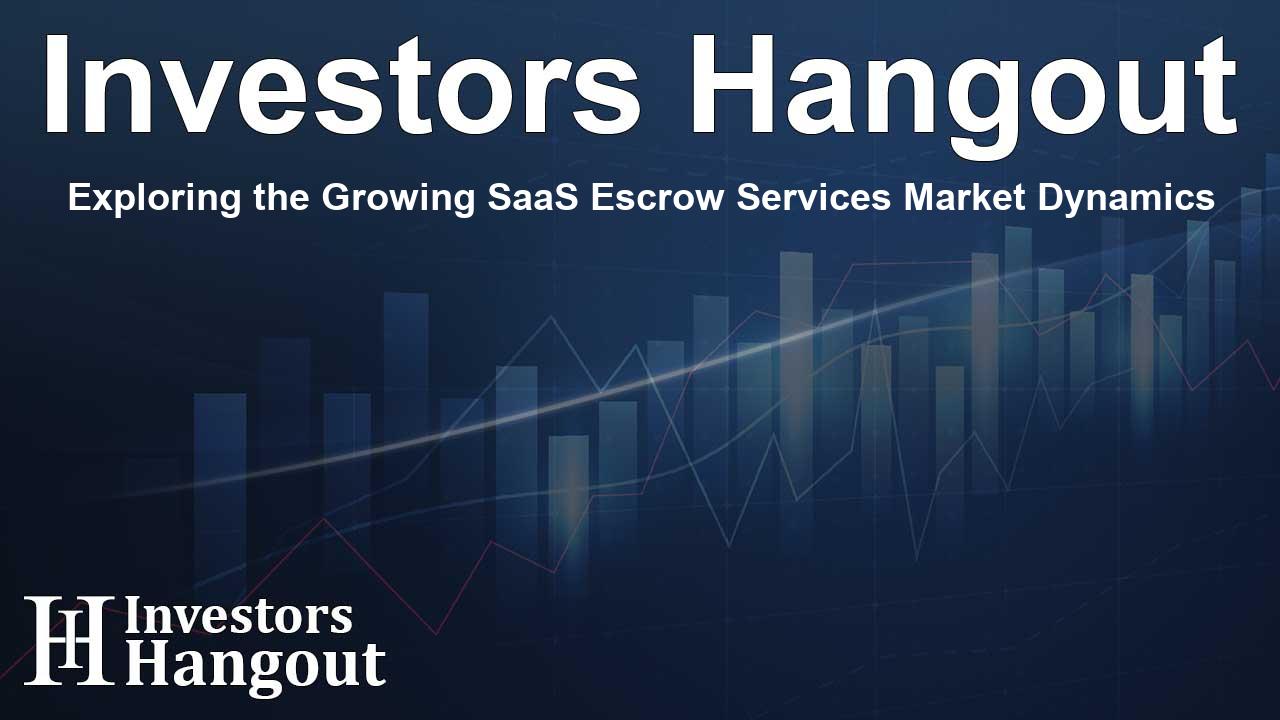Exploring the Growing SaaS Escrow Services Market Dynamics

Analyzing the SaaS Escrow Services Market Trends and Growth
The SaaS escrow services market is on a promising trajectory, with forecasts predicting it to reach an impressive $12.6 billion by 2027 and potentially $26.4 billion by 2033, growing at a compound annual growth rate (CAGR) of 14.3%. Technological advancements such as automated verification and blockchain integration are pivotal, enhancing the reliability of services offered in this sector.
Current Market Landscape
According to recent reports, the market value of SaaS escrow services stood at $6.7 billion in 2023, highlighting a significant expansion fueled by the increased adoption among enterprises. Organizations across various industries are increasingly recognizing the need for these services to safeguard their operations against various risks, including vendor lock-in and data loss. This growing reliance on SaaS applications necessitates secure business continuity solutions, further propelling market growth.
Driving Factors Behind Market Expansion
Several key factors are at the forefront of the market's robust expansion. Primarily, the rising reliance on cloud-based software solutions has led organizations to invest in SaaS escrow services as a means to ensure operational resilience against unexpected disruptions. Additionally, the advancement of automation, blockchain verification, and AI-driven contract management technologies is enhancing the efficacy and appeal of these solutions.
Challenges and Opportunities
However, challenges such as the high cost of innovation and budget constraints, along with security and privacy apprehensions, may restrict growth in the market. Nonetheless, significant opportunities exist in the form of increasing demand for third-party risk management solutions and strengthening data protection regulations. The landscape presents several avenues for proactive providers to incorporate innovative strategies and enhance their service offerings.
Market Segmentation Insights
The SaaS escrow services market is categorized into deployment mode, enterprise size, industry vertical, and geographic regions. Notably:
- Deployment Mode: The public cloud segment has emerged as a leader, offering cost-effectiveness and scalability.
- Enterprise Size: Large enterprises are increasingly adopting escrow services for enhanced risk management and compliance.
- Industry Vertical: The IT and telecom sectors continue to dominate due to their significant investments in securing business continuity through escrow solutions.
- Regions: North America stands out due to robust investments and concerns regarding data security, while the Asia-Pacific region is rapidly evolving, driven by digital transformation.
Technological Innovations Shaping the Future
Technological innovations are significantly reshaping the SaaS escrow services landscape. The integration of blockchain technology is enhancing security by providing decentralized ledgers that ensure the integrity of transactions. Real-time monitoring tools are now available, granting organizations immediate insights into the status of their escrowed assets.
Future Trends to Watch
Moreover, automation is streamlining negotiation processes and asset releases, allowing for more efficient transactions. Artificial intelligence is also gaining traction, being used for risk assessments and predictive analytics, establishing a more proactive posture against potential disruptions in service delivery.
The Role of Key Players
Leading firms like Ardas Group, NCC Group, and Escrow London remain at the forefront of this dynamic market, constantly adapting their strategies to meet evolving client needs. These companies are focusing on expanding their capabilities while prioritizing cybersecurity measures to foster trust among clients.
Strategies Adopted by Market Leaders
Noteworthy collaborations and acquisitions have been pivotal in enhancing service offerings. For example, recent partnerships have centered on developing tools that assess software integrity and vulnerabilities, thus addressing critical levels of cybersecurity.
Frequently Asked Questions
1. What is the current market size of SaaS escrow services?
The market size stood at $6.7 billion in 2023 and is projected to continue growing significantly over the coming years.
2. What are the main drivers for the growth of this market?
The main drivers include technological advancements, the increasing reliance on cloud-based applications, and the need for secure business continuity.
3. Who are the key players in the SaaS escrow services market?
Major players include Ardas Group, NCC Group, and Escrow London, among others, each focusing on innovative solutions and service expansion.
4. What challenges do companies face in this market?
Challenges include high innovation costs, budget constraints, and security and privacy concerns that impact decision-making.
5. How does technology influence the SaaS escrow services market?
Technological advancements like blockchain and automation are enhancing the security, efficiency, and credibility of escrow arrangements.
About The Author
Contact Hannah Lewis privately here. Or send an email with ATTN: Hannah Lewis as the subject to contact@investorshangout.com.
About Investors Hangout
Investors Hangout is a leading online stock forum for financial discussion and learning, offering a wide range of free tools and resources. It draws in traders of all levels, who exchange market knowledge, investigate trading tactics, and keep an eye on industry developments in real time. Featuring financial articles, stock message boards, quotes, charts, company profiles, and live news updates. Through cooperative learning and a wealth of informational resources, it helps users from novices creating their first portfolios to experts honing their techniques. Join Investors Hangout today: https://investorshangout.com/
The content of this article is based on factual, publicly available information and does not represent legal, financial, or investment advice. Investors Hangout does not offer financial advice, and the author is not a licensed financial advisor. Consult a qualified advisor before making any financial or investment decisions based on this article. This article should not be considered advice to purchase, sell, or hold any securities or other investments. If any of the material provided here is inaccurate, please contact us for corrections.
